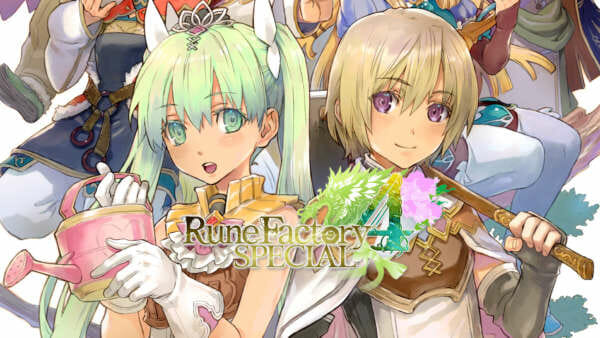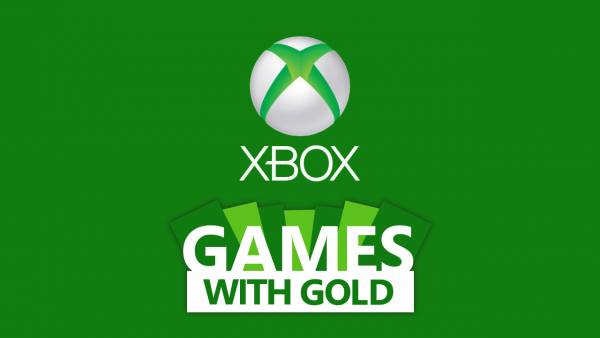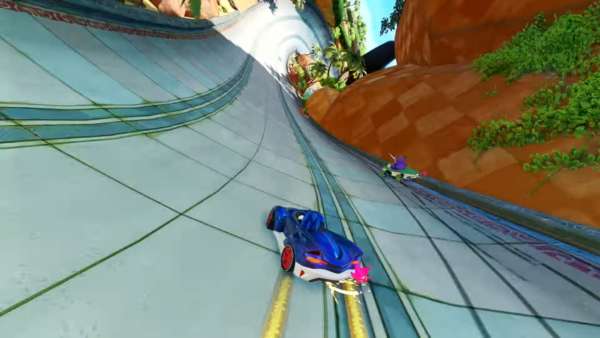Max: The Curse of Brotherhood comes from a strange cross of Limbo-esque gameplay mixed with the artistic style of a Pixar movie. Oh and a big magic pen, throw that in there too. Created by Press Play, a Danish studio recently acquired by Microsoft, Max is a 2.5D platformer and spiritual successor to Max and the Magic Marker.
Right of the bat, Max’s strongest feature is its atmosphere, achieved through a combination of art style and environments. Visually, Max is stunning, with beautiful, Pixar-esque characters and an in-game world made up from vibrant colours and exaggerated features. The levels are varied and unique as well, ensuring you never get stuck in the same place for too long as you venture from desert to forest, swamp and underground caves before ending up in Mustacho’s castle.
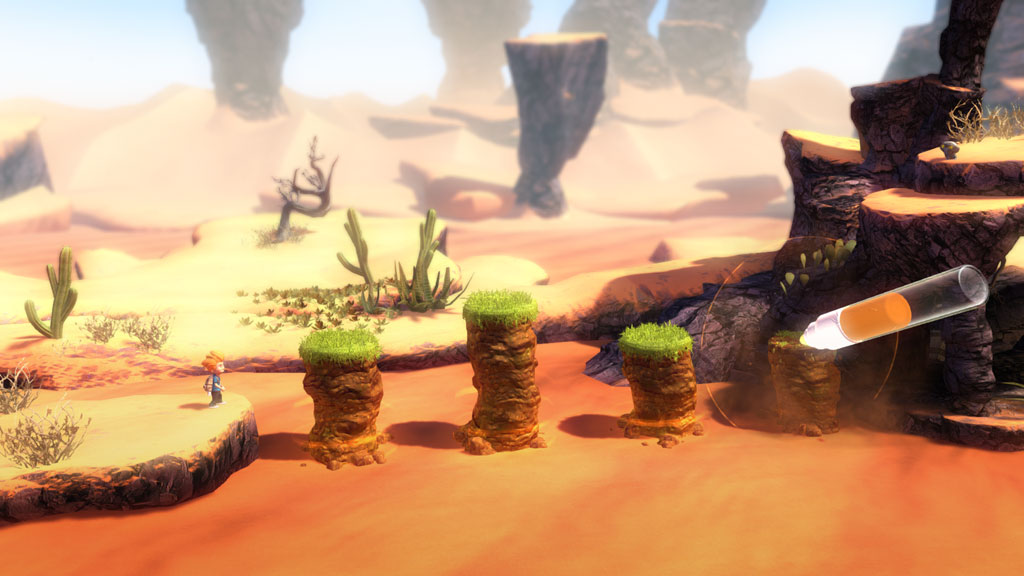
The story to Max is pretty simple, serving more as an excuse for the gameplay to occur rather than trying to say anything meaningful. Max comes home from school to find his little brother Felix messing up his room. So naturally Max surfs the web and finds a spell to make his obnoxious sibling disappear. Cue the giant monster arm grabbing Felix and dragging him to another dimension. Max gives chase, presumably realising that this one might be a little hard to explain to his parents, and so the adventure begins. Not long after arriving at Anotherland, Max meets a witch who possesses his magic marker, turning it into an actual magic marker. She also explains that Felix has been kidnapped by the evil Mustacho who wishes to achieve immortality by swapping bodies with Felix to be young again.
The stupidity of Mustacho’s plot aside, who was presumably just sitting waiting for some kid to accidentally send their brother to another dimension before he kicked things off, it’s a nice framing device for an epic adventure and it sort of sets itself up as being about Max’s reconciliation with his annoying brother and him coming to love him, but it never really resolves any of this. Max is annoyed by his sibling at the start and accepts him at the end, but there was no meaningful interaction or moment of bonding between them during the game.
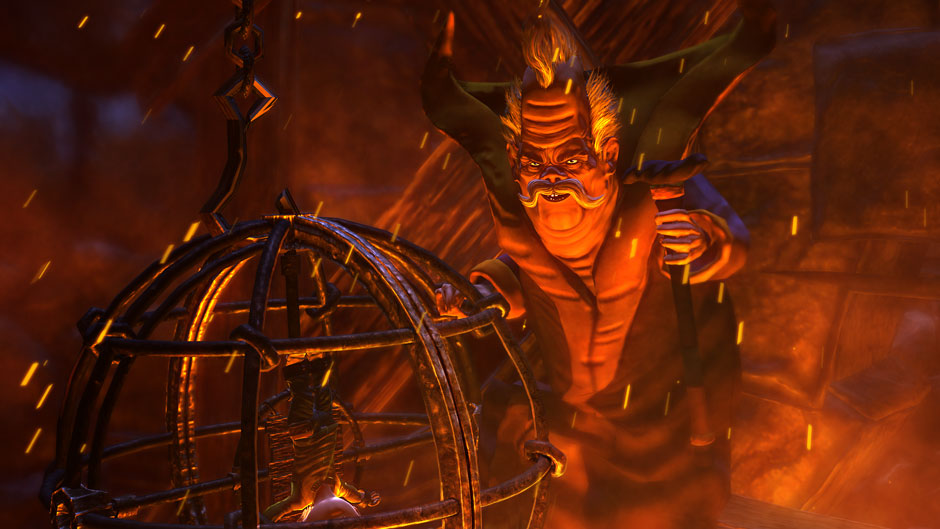
Max: The Curse of Brotherhood’s hook is the addition of Max’s magic marker, which can be used to draw things to help you traverse the environments. However unlike the original game, you are limited as to what and where you can draw. So a glowing blue area will allow you to draw a water stream whilst a glowing dark green area will let you draw a branch. You have a limited amount of ink to draw from each point, so you can’t just create a giant super branch to walk across every puzzle with. There are five different coloured points you can draw from, allowing you to create pillars of earth, branches, vines, water jets and fireballs. These abilities are unlocked throughout the game by visiting temples to power up the marker.
The platforming is slow-paced and pretty floaty, so don’t expect to be running up walls or getting your double jump on. Rather than create a difficult path for you to follow, Max leaves you the pieces and tells you to create your own path to the other side of the screen. This sounds a little more grandiose than it actually is though, as there is only one solution to each problem due to the limited nature of the marker mechanic. There are very few instances when you’ll really have to think about a puzzle, so if you’re looking for something to test your intellect then your search continues I’m afraid; Max is more content to let you revel in the spectacle of its mechanics.
That’s not to say you won’t die though. You will…a lot and in surprisingly brutal fashion. Max can find himself being crushed, impaled, eaten alive, drowned, suffocated and burnt to a crisp on his journey to rescue his little brother. Most of these deaths will occur during the chase segments, when Mustacho’s beast chases you across the landscape. During these sections, you will be forced to flee from the beast whilst simultaneously creating a path before you to aid in your escape. You can’t run and draw at the same time, so it’s a very stop-start experience which can feel a little awkward at times when you’re supposed to be running for your life but you’ve had to stop to draw a vine to swing on. Still, these segments do mix up the slower paced gameplay nicely, and the addition of some slow-motion sections when you’re falling, giving you enough time to draw a vine to save yourself, help to create an intense experience.
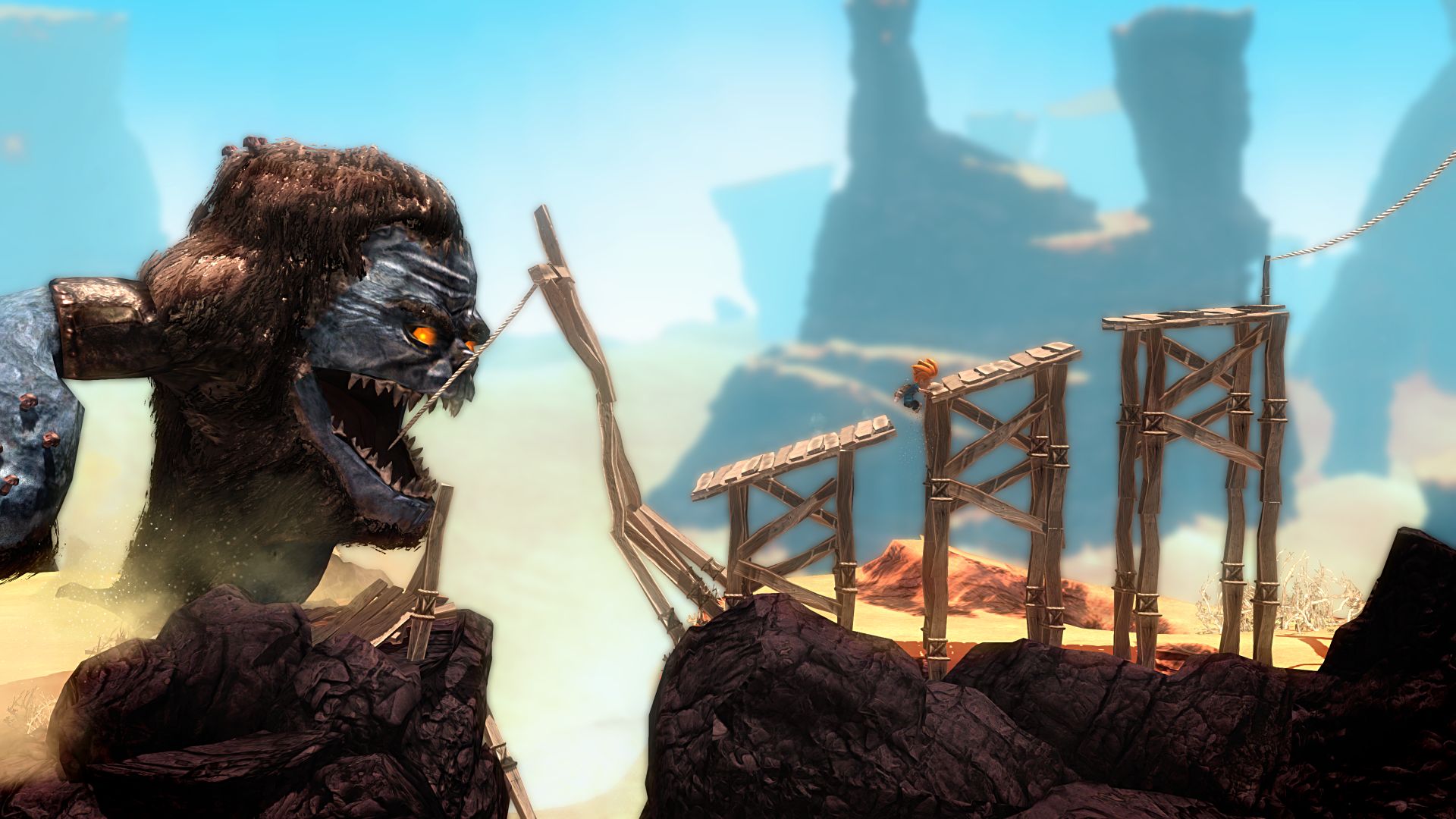
The marker is enough to set Max apart from other platformers, but the analogue sticks make it difficult to draw accurately at times. It can be finicky to perform the exact motion you were after, especially if you’re in a hurry (giant monster, lava etc.). As a result, you’ll find yourself dying not because you didn’t figure out what you needed to draw, but rather because you drew it slightly wrong. It’s surprising that Press Play didn’t try to incorporate the Kinect into the drawing side of things, though on reflection it was probably a wise move as the Kinect, whilst better than its predecessor, is still not accurate enough to draw with.
Throughout Max: The Curse of Brotherhood there are collectibles scattered across each level in the form of Mustacho’s eyes, basically his security cameras, and pieces of an ancient amulet. The collectibles add an element of replay value to the game and they can be pretty fun to go searching for as they are often hidden in difficult to reach or hidden areas, but they serve no purpose and give you nothing more than achievements for collecting them.
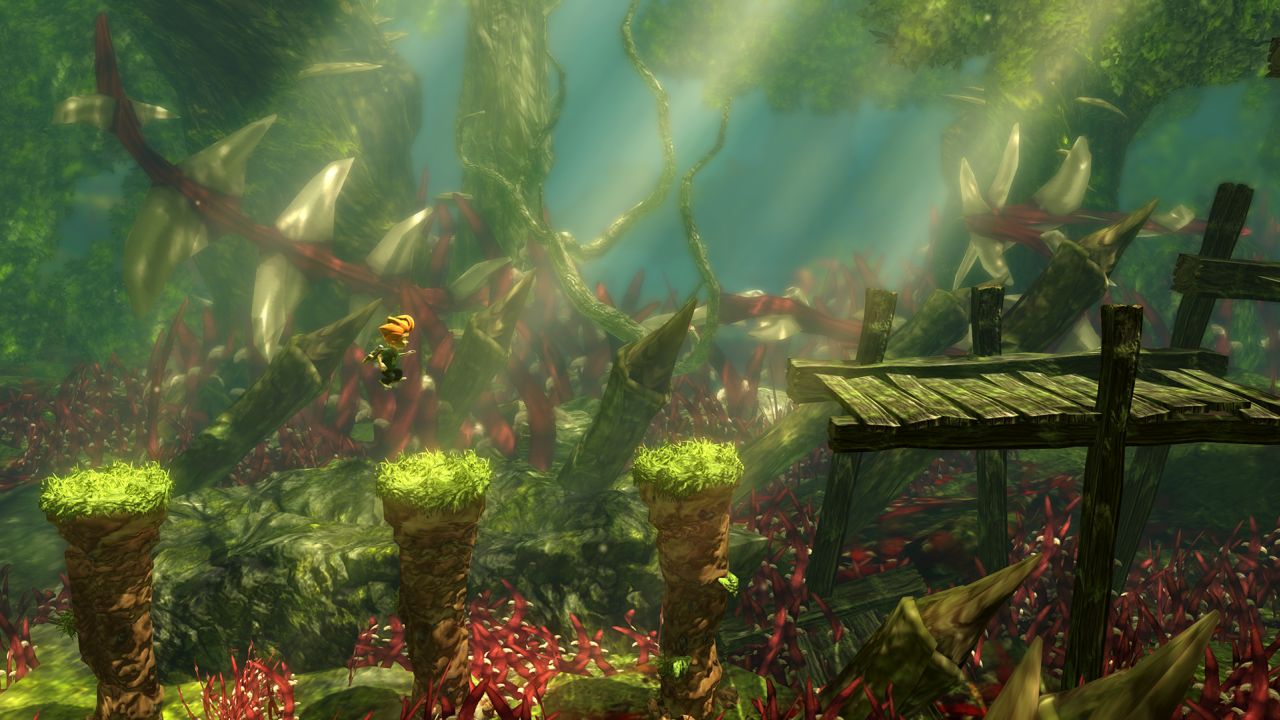
Max: The Curse of Brotherhood is a satisfying and ultimately enjoyable platformer and it fills a niche that the Xbox One is missing at the moment, at least until the rerelease of Rayman Legends in February. The marker works well enough, but it fails to feel natural and whenever you’re being chased and you have to build a platform on the fly it always stops your flow like a brick wall. An enticing art style provides the charm, but the plot itself is just too shallow. If you’re into your platformers then you will find enjoyment and spectacle here, but not much to challenge your intellect.
